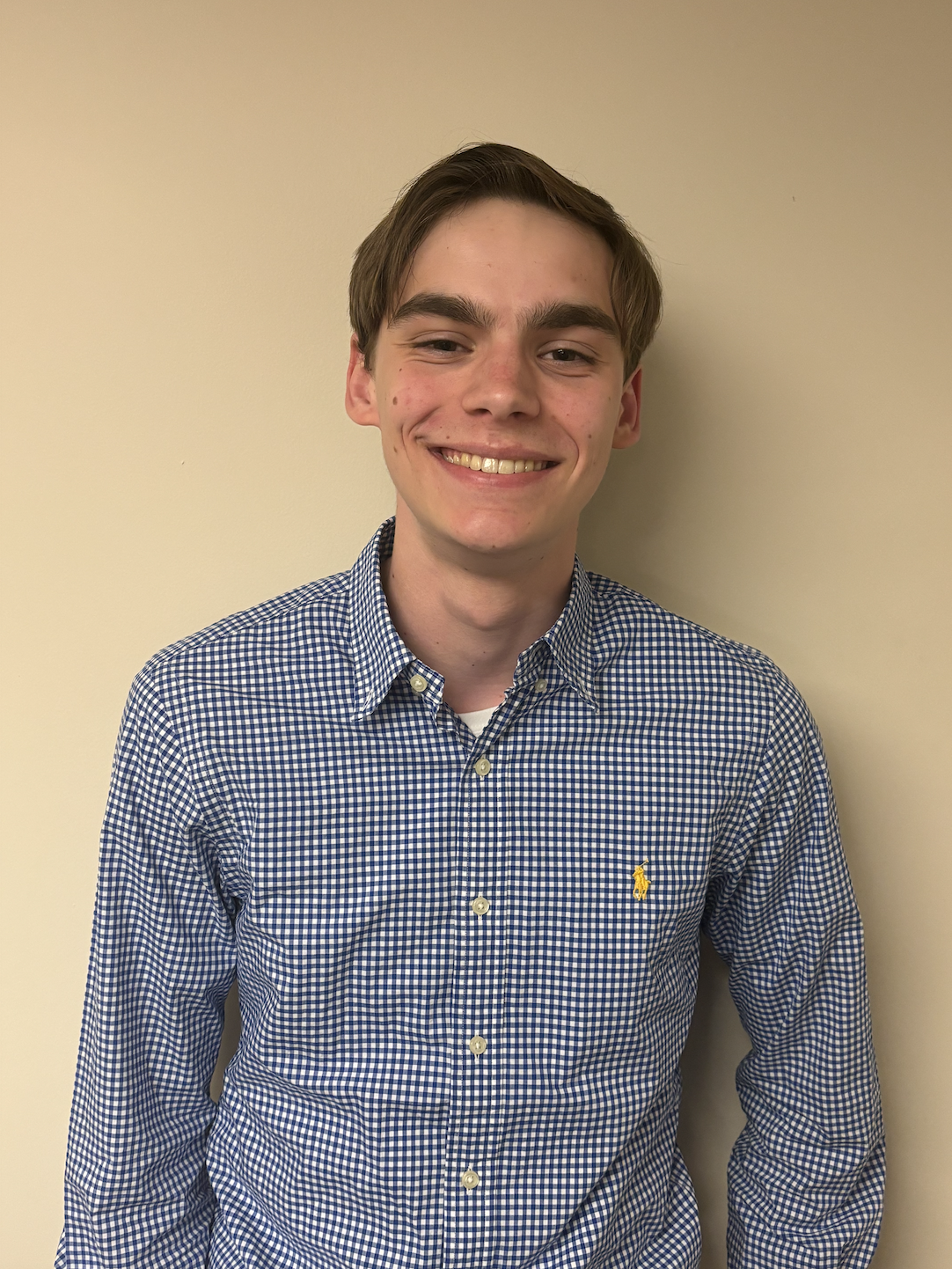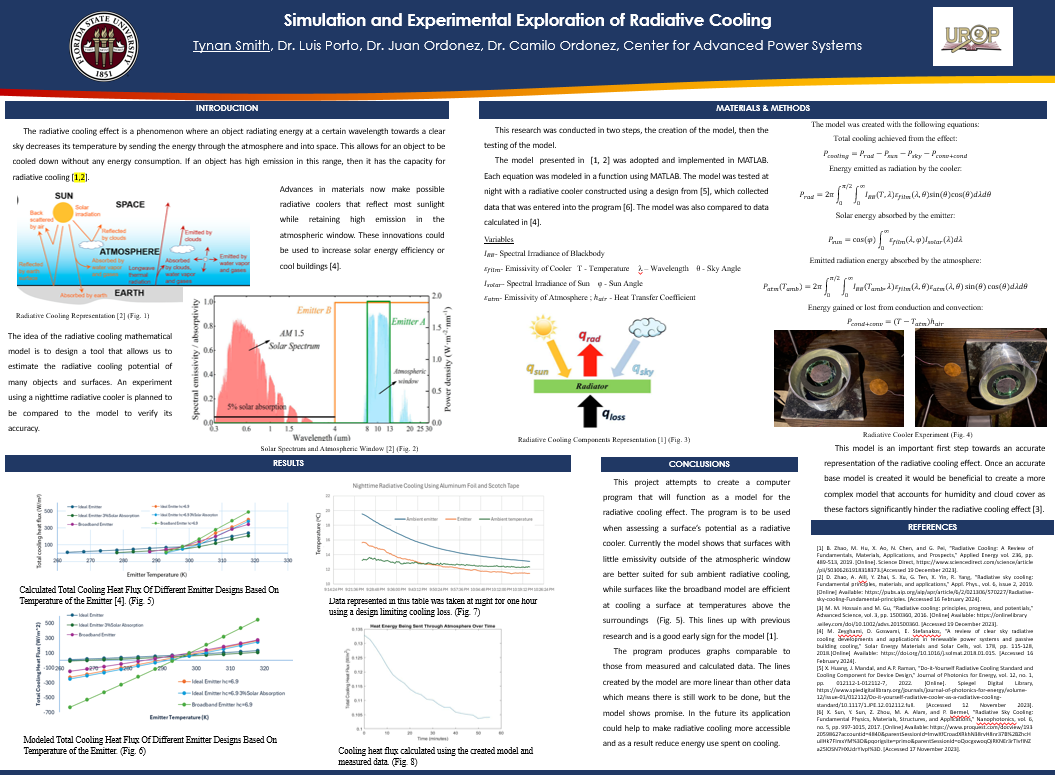Research Symposium
24th annual Undergraduate Research Symposium, April 3, 2024
Tynan Smith Poster Session 3: 1:30 pm - 2:30 pm /195

BIO
My name is Tynan Smith, I am a freshman industrial engineering major from Saint Louis, Missouri. I am trying to create a computer program to model the radiative cooling effect. Eventually I hope to work to prevent further climate change in some capacity.
Simulation and Experimental Exploration of Radiative Cooling
Authors: Tynan Smith, Luis PortoStudent Major: Industrial Engineering
Mentor: Luis Porto
Mentor's Department: Center for Advanced Power Systems Mentor's College: College of Engineering Co-Presenters:
Abstract
The radiative cooling effect is a method by which an object can be cooled without using any electricity. It occurs when an object emits energy in the form of radiation with wavelength between eight and thirteen micrometers in the direction of a clear sky. Radiation of these wavelengths can pass through the atmosphere and enter cold space which rids the object of the heat energy and as a result the object cools. Until recently this effect was only practical to use at night because objects that emit more energy also absorb more so they were gaining more energy from the sunlight than they could put back out. Then advances in materials allowed for sunlight of wavelengths outside of the eight to thirteen range to be reflected back while still emitting within that range. The application of this effect could reduce energy use and potentially help countries with limited electricity access to cool homes. By creating a computer program to be used as a mathematical model of the phenomenon and testing the program’s accuracy once completed, it could be made easier to test different surfaces’ radiative cooling potential. The testing found that the model is similar to other calculated data, but the data comes out too linear. Future research could attempt to quantify the effect of factors such as cloud cover and humidity so that they could be incorporated into a more accurate future model.
Keywords: radiation, cooling, model, simulation


